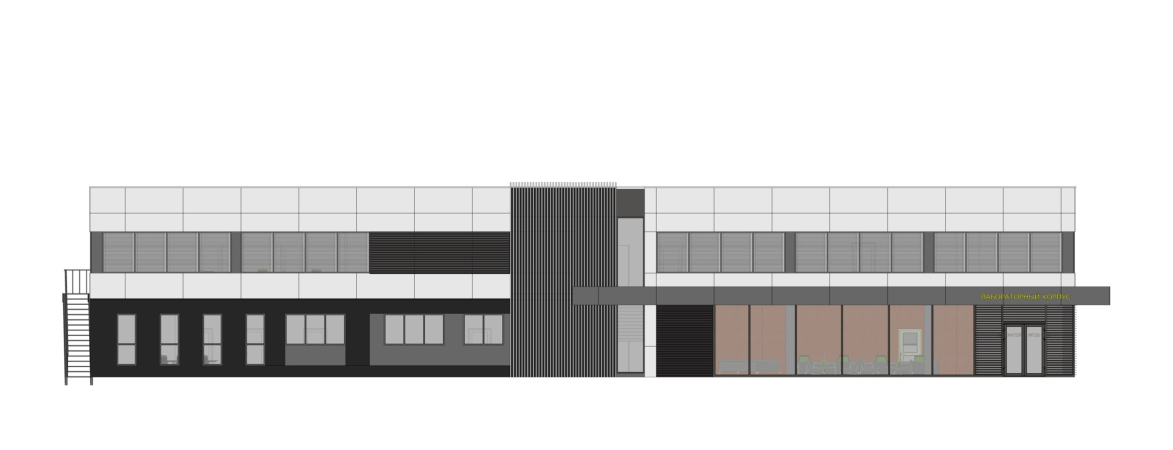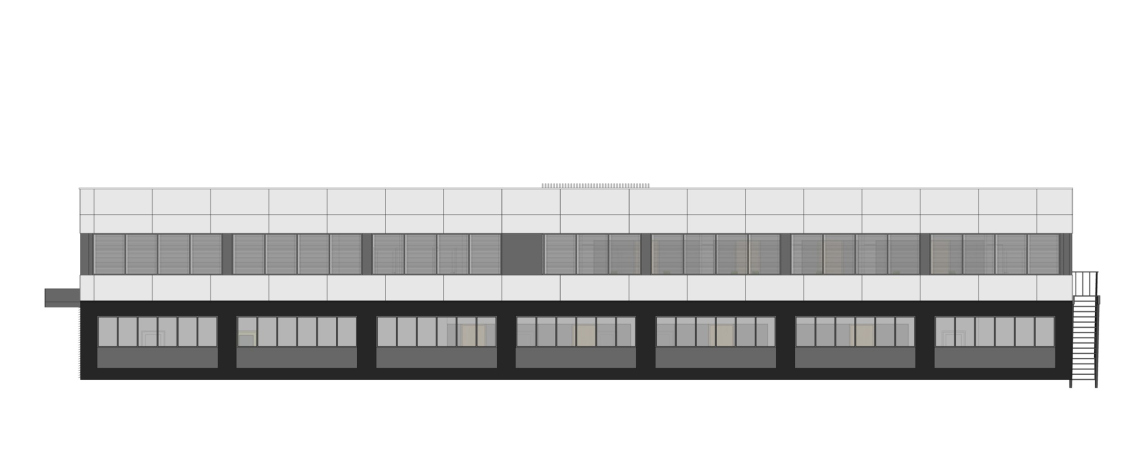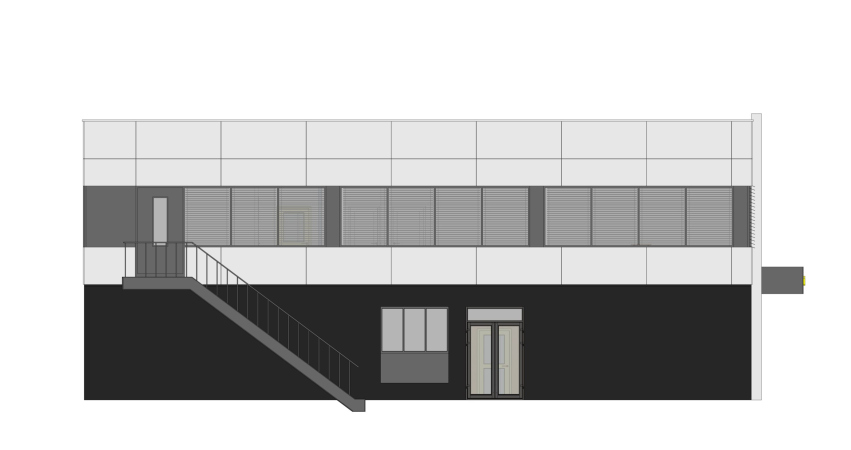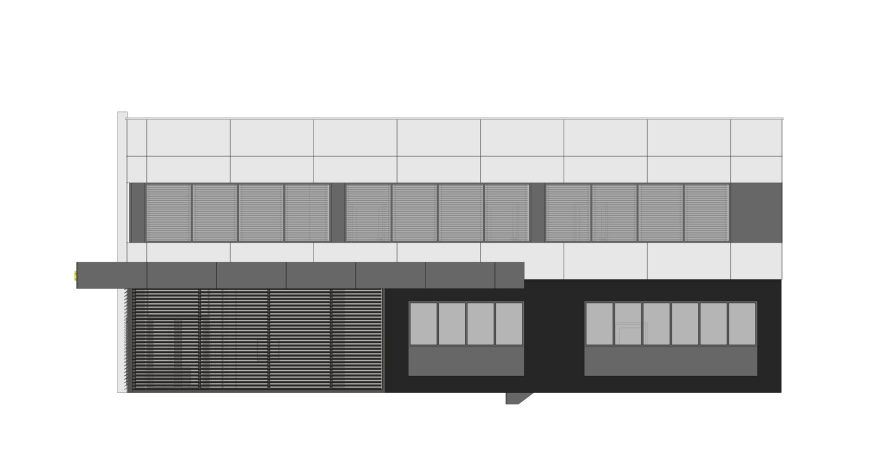The excessive stylistic diversity of the buildings is offset by century-old trees that surround them, as well as by cutting-edge equipment and highly skilled medical professionals. Making accurate diagnoses, choosing effective therapy, and combating the disease effectively is facilitated by molecular research. This is why the need for a designated building for a modern laboratory has long been in existence.
Laboratory of Oncomorphology and Molecular Genetics at the Moscow City Oncological Hospital No. 62
Copyright: © Mezonproject (Headed by Ilia Mashkov)
The medical professionals became full-fledged participants of the design process and set the bar for a state-of-the-art research center, because the image of the laboratory came into shape long before the financing appeared – in international trips, conferences, and thousands of routine examinations of genetic material. After the doctors, the first fiddle was played by the technologist because a lot of unique factors were to be taken into consideration: from the air movement in the rooms to the weight of the lockers where the glass plaques with bio materials are stored. The architects set for themselves a task of making the building convenient, aesthetically pleasing, and matching the surrounding natural context.
One of our main tasks was to create a comfortable environment for the laboratory specialists, and I think we quite succeeded. The laboratory research rooms and the corridor, which is separated from them by a transparent wall, and the glass rear facade command a breathtaking view of the forest that begins behind the laboratory building.
Laboratory of Oncomorphology and Molecular Genetics at the Moscow City Oncological Hospital No. 62
Copyright: © Mezonproject (Headed by Ilia Mashkov)
The new building is essentially a rectangular two-story volume that is placed between the surgical and radiology units, marks the corner, and closes the perimeter of the clinic’s grounds. Thus, some of the premises, predominantly laboratories, command views of the forest that steps up really close, and the reception areas and conference halls are turned in the direction of the yard.
The new building is not a capital structure, which allowed the architects to start and complete construction on a very short notice, and the terms in this case were indeed vitally important: today, the laboratory provides an opportunity to conduct about 50 thousand researches a year, which is almost five times as much as before. Essentially, the building is a module that was assembled right on the spot: the concrete foundation slab, metallic framework with fasteners and sandwich panels.
Laboratory of Oncomorphology and Molecular Genetics at the Moscow City Oncological Hospital No. 62
Copyright: © Mezonproject (Headed by Ilia Mashkov)
Considering the specifics of the building, the architects focused on proportioning. The elongated rectangular volume took on a fair bit of plastique thanks to the cantilever above the entrance group, the outside chamfers of the windows, and the accents of aluminum lamellas, as well as alternating dull, semitransparent, and transparent surfaces. The color design helped to turn the facade into a well-balanced composition composed of virtual rectangles. The play of the larger volumes is picked up by smaller details: the planks of the lamellas, the imposts of the windows, and even the lines of the seams between the aluminum cassettes.
Laboratory of Oncomorphology and Molecular Genetics at the Moscow City Oncological Hospital No. 62
Copyright: © Mezonproject (Headed by Ilia Mashkov)
The color set connected the building to its surroundings, yet left it light enough, while the metallic blinds, which look like shutters, gave it a little bit of “Mediterranean” vivacious quality. The architects were able to find a reasonable balance between the seriousness, which is appropriate to the laboratory processes that take place in the building – and the friendliness that the patients need so much.
Laboratory of Oncomorphology and Molecular Genetics at the Moscow City Oncological Hospital No. 62
Copyright: © Mezonproject (Headed by Ilia Mashkov)
Another achievement is the height of the ceilings, on each floor they reach four meters. This made it possible to make the rooms spacious and bright and get as far away as possible from the oppressive atmosphere that often accompanies hospital offices and registries.
Laboratory of Oncomorphology and Molecular Genetics at the Moscow City Oncological Hospital No. 62
Copyright: © Mezonproject (Headed by Ilia Mashkov)
Comfort, of course, is necessary not only for patients, but also for doctors who experience high intellectual and emotional loads on a daily basis. Handling those should be made easier by the streams of natural light, abundance of greenery outside the windows, comfortable tables for working with a microscope, and the logic of stream deconfliction inside the building.
The glass partitions in the laboratories allow the medical professionals to work in peace without feeling isolated; the meeting rooms for meeting patients and their relatives provide an opportunity to switch from one kind of activity to another, and the conference halls have equipment for remote exchange of best practices and holding educational events.
Laboratory of Oncomorphology and Molecular Genetics at the Moscow City Oncological Hospital No. 62
Copyright: © Mezonproject (Headed by Ilia Mashkov)
The laboratory became a venue for introducing innovative technologies in the clinic’s routine. There are plans for conducting medical councils and video conferences with colleagues from other scientific institutions, as well as developing a single digital morphology base – a single bank for histology research data that, among other things, will be processed by artificial intelligence.
We habitually perceive laboratory research as something utilitarian, requiring only sufficient space to accommodate equipment and materials. Working together with architects on our laboratory has revealed to us that even a functional space can be interesting, impressive and inspiring.












































